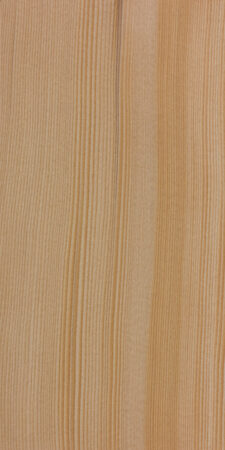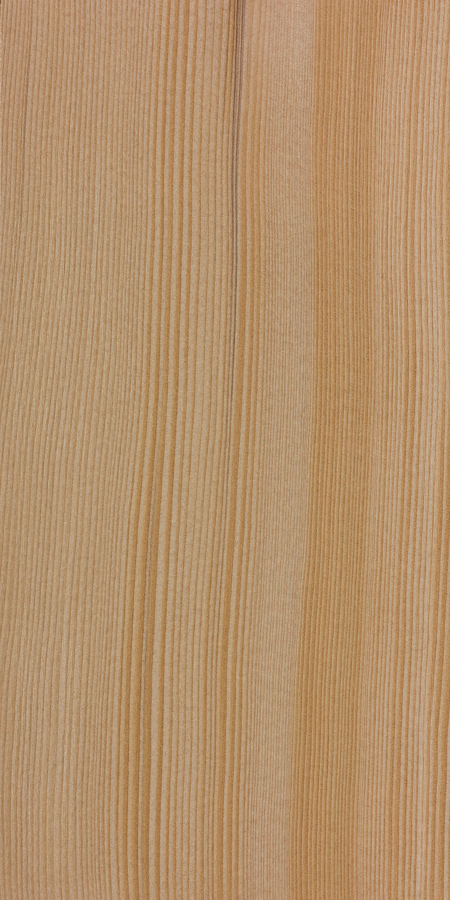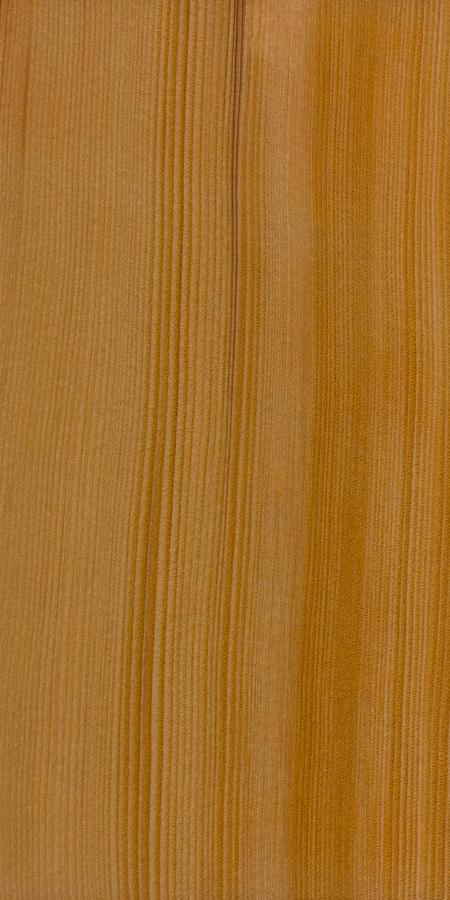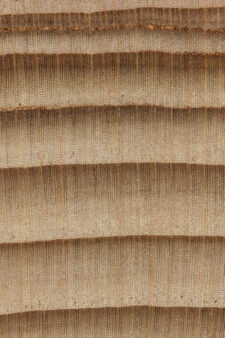DATA SOURCE(S): 2,4
Common Name(s): Western hemlock
Scientific Name: Tsuga heterophylla
Distribution: Northwest coast of North America
Tree Size: 165-200 ft (50-60 m) tall,
3-5 ft (1-1.5 m) trunk diameter
Average Dried Weight: 29 lbs/ft3 (465 kg/m3)
Specific Gravity (Basic, 12% MC): 0.37, 0.47
Janka Hardness: 540 lbf (2400 N)
Modulus of Rupture: 11300 lbf/in2 (77.9 MPa)
Elastic Modulus: 1630000 lbf/in2 (11.24 GPa)
Crushing Strength: 7200 lbf/in2 (37.3 MPa)
Shrinkage: Radial: 4.2%, Tangential: 7.8%,
Volumetric: 12.4%, T/R Ratio: 1.9
Color/Appearance: Heartwood is light reddish brown. Sapwood may be slightly lighter in color but usually isn’t distinguished from the heartwood. Occasionally contains dark streaks caused by bark maggots. The conspicuous growth rings can exhibit interesting grain patterns on flatsawn surfaces.
Grain/Texture: Grain is generally straight, with a coarse, uneven texture.
Rot Resistance: Rated as non-durable regarding decay resistance, and also susceptible to insect attack.
Workability: Overall working properties are good, but because of the disparity between the soft earlywood and the hard latewood, sanding can create dips and uneven surfaces. Glues, stains, and finishes well.
Odor: No characteristic odor.
Allergies/Toxicity: Western hemlock has been reported to cause skin and respiratory irritation, as well as runny nose. See the articles Wood Allergies and Toxicity and Wood Dust Safety for more information.
Pricing/Availability: Western hemlock is one of the two primary commercial species of hemlock harvested in North America—with the other being eastern hemlock (Tsuga canadensis). Western hemlock is used as construction lumber and is commonly grouped together with other species of fir and hemlock and sold under the more generic label “HEM-FIR.” Expect prices to be moderate for a domestic softwood.
Sustainability: This wood species is not listed in the CITES Appendices, and is reported by the IUCN as being a species of least concern.
Common Uses: Boxes, pallets, crates, plywood, framing, and other construction purposes.
Comments: Western hemlock is the largest of the hemlocks, and is one of the most valuable sources of exportable lumber for Canada; the species is also the state tree of Washington. Its lumber is mixed with five principle fir native to western North America and sold under the stamp HEM-FIR. Species included in this stamp are:
Images: Drag the slider up/down to toggle between raw and finished wood.
Identification: See the article on Softwood Anatomy for definitions of endgrain features.
Resin canals : absent
Tracheid diameter : medium-large
Earlywood to latewood transition : gradual
Grain contrast : fairly high
Parenchyma : none
Lookalikes/Substitutes: Western hemlock is routinely intermixed with commercial species of fir (Abies genus) from western North America (see species listing in comments above). Distinguishing between these two genera has been described as “the most difficult of all conifers to separate visually.”[1]Hoadley, R. B. (1990, p. 156). Identifying wood: accurate results with simple tools. Taunton Press. Broadly, firs tend to have slightly softer/lighter wood, as well as slightly more gradual transitions between earlywood to latewood.
Notes: Identification of commercial hemlock down to a species level usually is not possible, but given the wide distance between the native regions of western and eastern hemlock, knowing the geographic source of the wood is usually enough. However, western hemlock generally has narrower growth rings, though both species can have tightly spaced growth rings.
Related Content:












Can we use for sports wooden floor if we use what is the deficit
Has anyone ever heard of or had a skin rash from Hemlock?
Any resin could affect a person negatively.
operated alog debarker in creswell or . ran alot of western hemlock through barker .If i had a small cut on a finger and got hemlock bark or wood fiber in it the cut would swell up and fester .I would squeeze my finger around the cut to get fluid out . IT would take about two weeks for my finger to heal .A week longer than it normally take to heal. while barking hemlock the bark hog would plug up and when you had to open up the door on the hog steam would come out from the hammer… Read more »